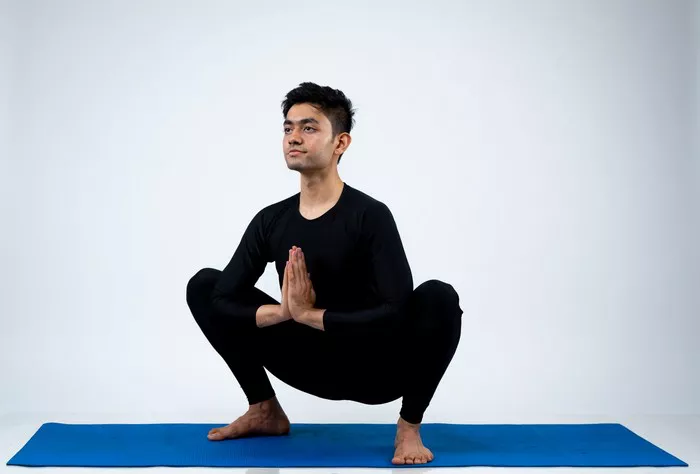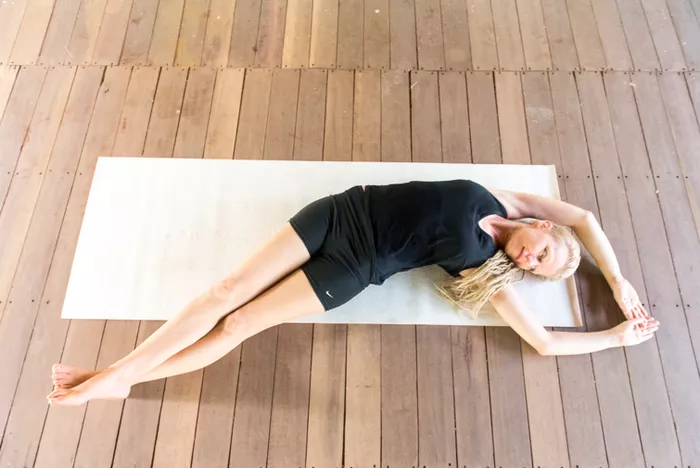Constipation is a common health issue that affects people of all ages. It is characterized by infrequent, difficult, or painful bowel movements, and it can lead to discomfort, bloating, and frustration. While there are many treatments available, yoga is a holistic and natural way to manage and even alleviate constipation. Many people are turning to yoga not just for stress relief and flexibility, but also for digestive health. Regular yoga practice can stimulate the digestive system, reduce bloating, and promote overall gastrointestinal health. If you’re struggling with constipation, integrating specific yoga poses into your routine might offer the relief you’ve been searching for.
In this article, we will explore how yoga poses can help improve digestion, ease constipation, and promote regularity. We’ll dive into some effective yoga postures specifically targeted at relieving constipation and improving gut function. These poses help stimulate the internal organs, enhance circulation, and relieve tension that may be contributing to digestive issues. Yoga not only aids in physical movement but also helps reduce stress, which can be a major factor in digestive disruptions. Through mindful breathing and gentle stretches, these yoga poses can support a healthy, functioning digestive system.
What is Constipation and How Does Yoga Help?
Constipation is typically defined as having fewer than three bowel movements per week, accompanied by difficulty or discomfort when passing stools. It can be caused by a number of factors, including poor diet, dehydration, stress, lack of physical activity, or certain medical conditions. While many people reach for over-the-counter medications or rely on laxatives to ease constipation, yoga offers a natural and effective alternative. Yoga helps to stimulate the parasympathetic nervous system, which is responsible for “rest and digest” functions. By practicing yoga poses that focus on stretching and compressing the abdomen, the movement encourages the digestive system to work more efficiently.
Yoga also helps to relieve stress and tension, which can often exacerbate constipation. Stress tends to tighten muscles, including those in the abdomen, which can make it harder for the digestive system to function properly. Certain yoga postures can gently massage the digestive organs, increase blood flow to the intestines, and help move food through the digestive tract. Furthermore, the deep breathing techniques used in yoga, such as diaphragmatic breathing, can aid in relaxation and promote a balanced, functioning digestive system. By calming the mind and body, yoga addresses both the physical and emotional components of constipation.
See Also: What Are Some Fun Two-Person Yoga Poses to Try Together?
Effective Yoga Poses to Relieve Constipation
1. Wind-Relieving Pose (Pavanamuktasana)
Why It Works:
The Wind-Relieving Pose, or Pavanamuktasana, is one of the most effective yoga poses for alleviating constipation. This posture helps to release trapped gas in the stomach and intestines and encourages bowel movement. By pressing the knees toward the chest and gently massaging the abdominal area, this pose stimulates the digestive organs, promoting peristalsis (the contractions that move food through the intestines).
How to Perform:
Start by lying flat on your back with your legs extended.
Inhale deeply, then exhale as you bend your knees and pull them toward your chest.
Hold your knees with your hands, keeping your arms wrapped around your shins.
Try to tuck your chin to your chest and gently rock from side to side for a few breaths.
Hold the pose for 20-30 seconds before slowly releasing.
This pose is great for massaging the abdomen and stimulating bowel movements. You can also practice it multiple times to relieve gas and bloating.
2. Cat-Cow Pose (Marjaryasana-Bitilasana)
Why It Works:
The Cat-Cow Pose is a dynamic movement that involves alternating between arching and rounding the back. This helps to stretch the spine and activate the muscles around the abdomen, promoting digestion and easing constipation. The movement of the spine also helps to gently massage the internal organs, which can encourage the movement of food through the intestines.
How to Perform:
Begin in a tabletop position on your hands and knees, with your wrists directly under your shoulders and your knees under your hips.
Inhale and arch your back, dropping your belly toward the floor and lifting your chest and tailbone (this is the Cow pose).
Exhale and round your back, tucking your chin toward your chest and drawing your belly button toward your spine (this is the Cat pose).
Continue moving between these two positions for 1-2 minutes, synchronizing your breath with the movement.
This pose is especially useful for gently stretching the abdominal area and stimulating digestion. It also helps relieve tension in the lower back, which is often associated with digestive discomfort.
3. Downward-Facing Dog (Adho Mukha Svanasana)
Why It Works:
Downward-Facing Dog is a full-body stretch that helps improve circulation and stimulates the abdominal organs. This pose encourages the movement of fluids through the digestive system and enhances the function of the gut. It also helps to relieve tension in the neck, back, and abdomen, which can ease constipation.
How to Perform:
Start on your hands and knees in a tabletop position.
Tuck your toes under and lift your hips toward the ceiling, creating an inverted V-shape with your body.
Press your hands firmly into the mat, keeping your fingers spread wide, and try to straighten your legs, keeping your heels towards the floor.
Let your head hang between your arms, and focus on breathing deeply into your abdomen.
Hold for 30 seconds to 1 minute, then gently lower your knees to the floor to come out of the pose.
This pose not only stretches the back and hamstrings but also activates the abdominal area, promoting healthy digestion.
4. Seated Forward Bend (Paschimottanasana)
Why It Works:
Seated Forward Bend is a calming yoga pose that involves folding forward from the hips, which helps to stimulate the abdominal organs. This pose compresses the digestive system gently, encouraging bowel movement and easing discomfort from constipation. Additionally, it can help stretch the hamstrings and lower back, which can further release tension that may be contributing to digestive issues.
How to Perform:
Sit on the floor with your legs extended straight in front of you.
Inhale and lengthen your spine, then exhale as you hinge forward from your hips.
Reach for your feet or ankles with your hands, and try to bring your chest closer to your thighs.
Keep your spine as straight as possible, and breathe deeply into your abdomen.
Hold the position for 30 seconds to 1 minute, then gently come out of the pose.
This forward bend stretches the back and encourages the flow of energy through the digestive tract.
5. Supine Twist (Supta Matsyendrasana)
Why It Works:
The Supine Twist is a gentle spinal twist that helps massage the internal organs, including the intestines, by applying pressure to the abdomen. This movement encourages the elimination process, reduces bloating, and promotes better digestion. It also releases tension in the lower back, which is often linked to digestive problems.
How to Perform:
Lie flat on your back with your arms extended out to the sides.
Bend your knees and place your feet flat on the floor.
Inhale, then as you exhale, drop your knees to one side, keeping your shoulders on the ground.
Hold the position for 30 seconds to 1 minute, breathing deeply into your belly.
Inhale to bring your knees back to center, and then repeat on the other side.
This pose helps to stimulate digestion and can be practiced both in the morning and before bed.
Conclusion
Incorporating yoga into your daily routine can be a powerful way to relieve constipation and improve overall digestive health. The poses mentioned above not only help relieve physical discomfort but also promote relaxation, reduce stress, and improve circulation, all of which play a crucial role in healthy digestion. By practicing these poses regularly, you can experience improved bowel function and a greater sense of well-being. Remember that yoga is most effective when combined with a balanced diet, proper hydration, and adequate physical activity.
If you’re new to yoga or have any underlying health conditions, it’s always best to consult with a healthcare professional or a certified yoga instructor before beginning any new exercise program. With consistent practice and a mindful approach, yoga can be an invaluable tool in maintaining digestive health and achieving long-lasting constipation relief.
You Might Be Interested In:























